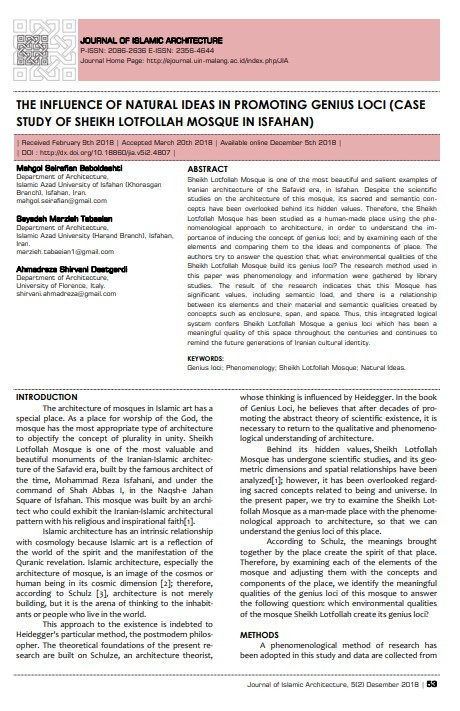
Sheikh Lotfollah Mosque is one of the most beautiful and salient examples of
Iranian architecture of the Safavid era, in Isfahan. Despite the scientific
studies on the architecture of this mosque, its sacred and semantic concepts have been overlooked behind its hidden values. Therefore, the Sheikh
Lotfollah Mosque has been studied as a human-made place using the phenomenological approach to architecture, in order to understand the importance of inducing the concept of genius loci; and by examining each of the
elements and comparing them to the ideas and components of place. The
authors try to answer the question that what environmental qualities of the
Sheikh Lotfollah Mosque build its genius loci? The research method used in
this paper was phenomenology and information were gathered by library
studies. The result of the research indicates that this Mosque has
significant values, including semantic load, and there is a relationship
between its elements and their material and semantic qualities created by
concepts such as enclosure, span, and space. Thus, this integrated logical
system confers Sheikh Lotfollah Mosque a genius loci which has been a
meaningful quality of this space throughout the centuries and continues to
remind the future generations of Iranian cultural identity.
I agree to the terms outlined below:
You agree to upload and assign Mosqpedia Database the rights to use the content worldwide and in perpetuity across all current and future media platforms. Mosqpedia Database may edit, copy, adapt and translate your contribution.
The content will be distributed under the Creative Commons Attribution-Deed – Attribution-NonCommercial-NoDerivatives 4.0 International – Creative Commons
All data will be stored in line with data protection regulations.